-
 The heated sampling system is a combination of a heated sample line and a heated sample filter. The sample line is 500mm long; the filter element can be replaced very quick with the bayonet lock. Beside the very precisious and constant regulation of the line and filter temperature, there is a separate controll point fort he temperature at the filterinlet, where you have an information of the exhaust gas temperature. Also the calibration gas (prewarmed) can directly connected with the unit. The thermocouple is available as PT 100 or NiCrNi.
The heated sampling system is a combination of a heated sample line and a heated sample filter. The sample line is 500mm long; the filter element can be replaced very quick with the bayonet lock. Beside the very precisious and constant regulation of the line and filter temperature, there is a separate controll point fort he temperature at the filterinlet, where you have an information of the exhaust gas temperature. Also the calibration gas (prewarmed) can directly connected with the unit. The thermocouple is available as PT 100 or NiCrNi. -
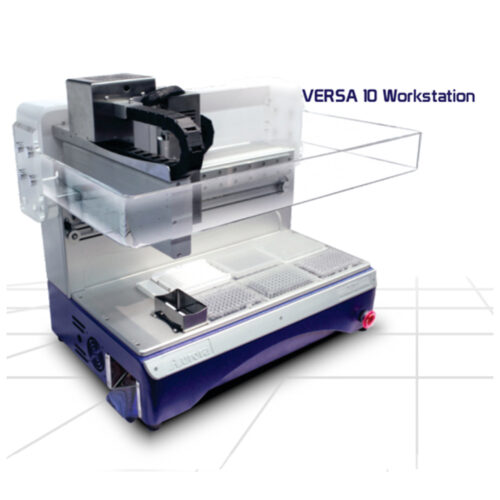
Het VERSA 10 werkstation is een compacte, kost effectieve, high throughput, automatische air-displacement vloeistof sampler.
Het systeem bied een oplossing voor de nood aan hoge doorvoer vloeistof behandelings mogelijkheden van een klein benchtop model tot een uitgebreid vloer model. Door het combineren van een 4 of 8 kanaals kop maar wel met single kanaals functionaliteit kan dit workstation de routine protocollen automatiseren met een variabele hoeveelheid aan samples. Het compacte 6positie werkplatform zorgt ervoor dat u de pipetteer protocollen kunt uitvoeren in een bio-afzuigkap of plekken met beperkte ruimte.
Dit systeem ondersteund verschillende eigen reagentia en labware door zijn open systeem en dit aan een zeer aantrekkelijke prijs.
-

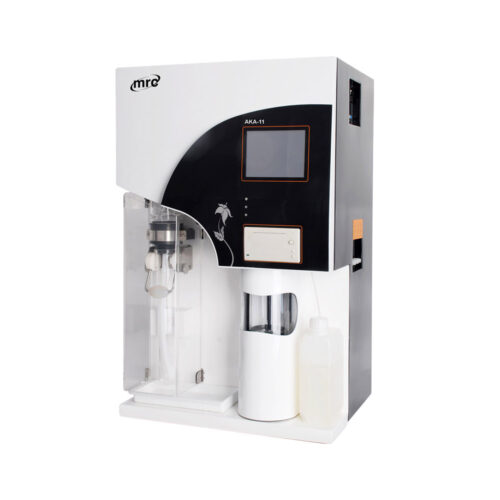
De Kjeldahl-methode is een methode geschikt om de fractie organische stikstof in samples te bepalen. De methode zal de hoeveelheid stikstof en ammoniak die in organische verbindingen vervat zit analyseren, enkel stikstof in de vorm van nitraten en nitrieten verbindingen worden genegeerd.
Deze erg oude methode is nog steeds de meest “populaire” (lees erkende) methode voor het bepalen van Stikstof in waters en voedsel samples.
Omwille van de chemicaliën en de hogere temperaturen die zich in het Kjeldahl proces voordoen is Kjeldahl lang een ongewenste gast op het labo geweest daar de nodige voorzichtigheid aangewezen is.
Vandaag zijn deze analyses bijna volledig geautomatiseerd, beveiligd en gecontroleerd zodat het gebruik van deze analyzers haast kinderspel geworden is.
-

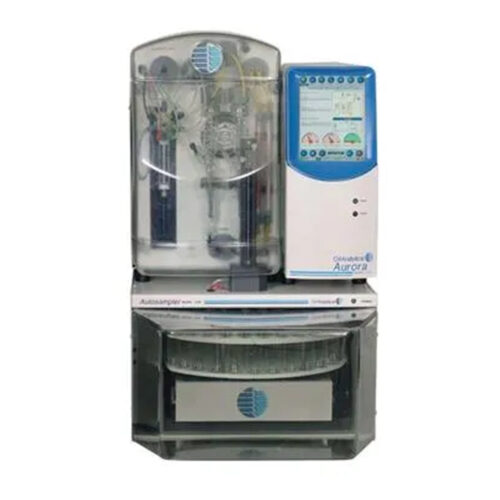 The Aurora 1030 line of TOC analyzers from OI Analytical includes instrument configurations for laboratory and process monitoring, employing 100 °C persulfate wet oxidation or thermal combustion techniques. The Aurora 1030 line incorporates several noteworthy innovations and can be equipped with parallel reactors allowing concurrent sample processing for increased analytical throughput. The unique 1030D Dual Mode TOC analyzer allows sample processing by wet oxidation or thermal combustion using the same instrument.
The Aurora 1030 line of TOC analyzers from OI Analytical includes instrument configurations for laboratory and process monitoring, employing 100 °C persulfate wet oxidation or thermal combustion techniques. The Aurora 1030 line incorporates several noteworthy innovations and can be equipped with parallel reactors allowing concurrent sample processing for increased analytical throughput. The unique 1030D Dual Mode TOC analyzer allows sample processing by wet oxidation or thermal combustion using the same instrument. -
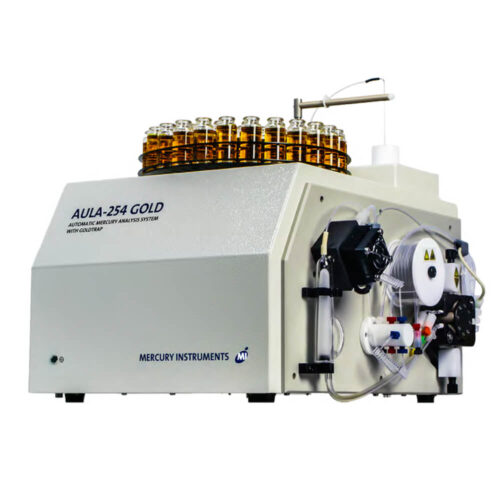 The AULA 254 is used for fully automatic determination of mercury traces in liquid samples and sample digests. The instrument carries out routine analysis: sample after sample following exactly the preselected procedure thus increasing efficiency and productivity of your lab. The working principle of the system is based on the continuous flow method. First the mercury contained in the sample is transformed into the elemental state by addition of a reducing agent to the sample flow. In a cross-flow reactor the mercury is stripped with a gas stream and carried into the optical cell which is made entirely of fused silica. There the quantitative determination of mercury is obtained by measuring UV absorption at a wavelength of 253,7 nm at room temperature. This analytical technique is commonly known as cold vapor atomic absorption spectrometry (CVAAS), a method that has proved itself as extremely sensitive and selective over many years. No long purging or rinsing procedures even when samples with high concentrations are analyzed. The typical duration of a full measurement cycle is 80 … 280 seconds. The quick screening mode allows performing analyses in even a shorter time.
The AULA 254 is used for fully automatic determination of mercury traces in liquid samples and sample digests. The instrument carries out routine analysis: sample after sample following exactly the preselected procedure thus increasing efficiency and productivity of your lab. The working principle of the system is based on the continuous flow method. First the mercury contained in the sample is transformed into the elemental state by addition of a reducing agent to the sample flow. In a cross-flow reactor the mercury is stripped with a gas stream and carried into the optical cell which is made entirely of fused silica. There the quantitative determination of mercury is obtained by measuring UV absorption at a wavelength of 253,7 nm at room temperature. This analytical technique is commonly known as cold vapor atomic absorption spectrometry (CVAAS), a method that has proved itself as extremely sensitive and selective over many years. No long purging or rinsing procedures even when samples with high concentrations are analyzed. The typical duration of a full measurement cycle is 80 … 280 seconds. The quick screening mode allows performing analyses in even a shorter time. -
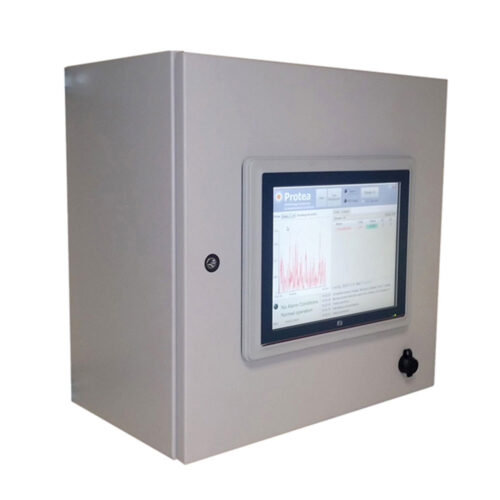 atmosFIR is the latest generation of gas analyser technology from Protea. The atmosFIR system improves upon previous FTIR technology and represents one of the most cost-effective and flexible analytical products on the market today. atmosFIRw has been designed to give a complete measurement system with embedded touchscreen controller. At the heart of atmosFIRw is a high-resolution, robust and proven FTIR spectrometer offering high signal throughput, low-noise and long lifetime of components. atmosFIRw has been developed to incorporate the latest improvements and advantages in technology, including:
atmosFIR is the latest generation of gas analyser technology from Protea. The atmosFIR system improves upon previous FTIR technology and represents one of the most cost-effective and flexible analytical products on the market today. atmosFIRw has been designed to give a complete measurement system with embedded touchscreen controller. At the heart of atmosFIRw is a high-resolution, robust and proven FTIR spectrometer offering high signal throughput, low-noise and long lifetime of components. atmosFIRw has been developed to incorporate the latest improvements and advantages in technology, including:- Low cost of ownership and maintenance
- Robust and light, including the latest in fabrication materials
- atmosFIR combines an FTIR analyser with an in-built sampling system and embedded PC controller for a complete system
-
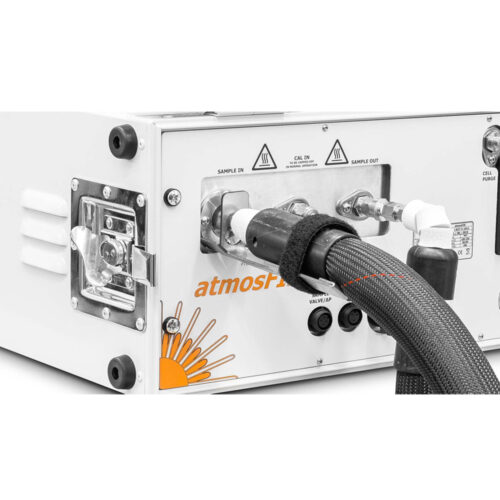
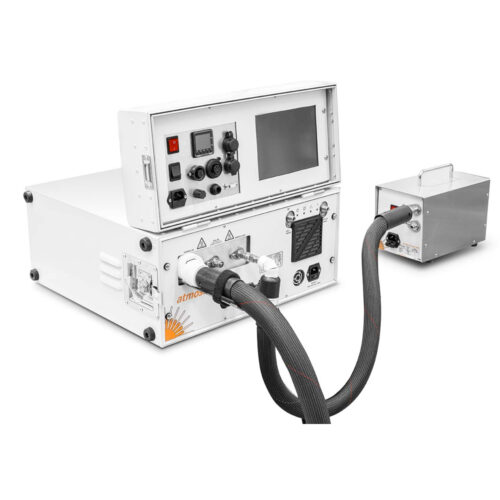 atmosFIRt is the latest generation of FTIR gas analyser technology from Protea in a portable or mobile form. The atmosFIR system improves upon previous FTIR technology and represents one of the most cost-effective and flexible analytical products on the market today. At the heart of atmosFIR is a high-resolution, robust and proven FTIR spectrometer offering high signal throughput, low-noise and long lifetime of components. atmosFIR has been developed to incorporate the latest improvements and advantages in technology.
atmosFIRt is the latest generation of FTIR gas analyser technology from Protea in a portable or mobile form. The atmosFIR system improves upon previous FTIR technology and represents one of the most cost-effective and flexible analytical products on the market today. At the heart of atmosFIR is a high-resolution, robust and proven FTIR spectrometer offering high signal throughput, low-noise and long lifetime of components. atmosFIR has been developed to incorporate the latest improvements and advantages in technology. -
 atmosFIR CEM is a complete emissions monitoring system incorporating the atmosFIR 19” FTIR analyser. As completely hot and wet emissions measurement, atmosFIR CEM is ideal for complete measurement of multiple gases from applications such as incineration and power. A standard gas suite of NO, NO2, N2O, SO2, NH3, HCl, CH4, O2, CO2 and H2O is provided, but with the powerful FTIR analyser, further gases can be added easily in software. At the heart of system is the high-resolution, robust and proven FTIR spectrometer offering high signal throughput, low-noise and long lifetime of components. atmosFIR has been developed to incorporate the latest improvements and advantages in technology, The atmosFIR FTIR analyser contains an in-built sampling system and is designed for ppm-level emissions monitoring. The analyser can be used as a portable or bench-top unit as well as part of the installed CEM system.
atmosFIR CEM is a complete emissions monitoring system incorporating the atmosFIR 19” FTIR analyser. As completely hot and wet emissions measurement, atmosFIR CEM is ideal for complete measurement of multiple gases from applications such as incineration and power. A standard gas suite of NO, NO2, N2O, SO2, NH3, HCl, CH4, O2, CO2 and H2O is provided, but with the powerful FTIR analyser, further gases can be added easily in software. At the heart of system is the high-resolution, robust and proven FTIR spectrometer offering high signal throughput, low-noise and long lifetime of components. atmosFIR has been developed to incorporate the latest improvements and advantages in technology, The atmosFIR FTIR analyser contains an in-built sampling system and is designed for ppm-level emissions monitoring. The analyser can be used as a portable or bench-top unit as well as part of the installed CEM system. -
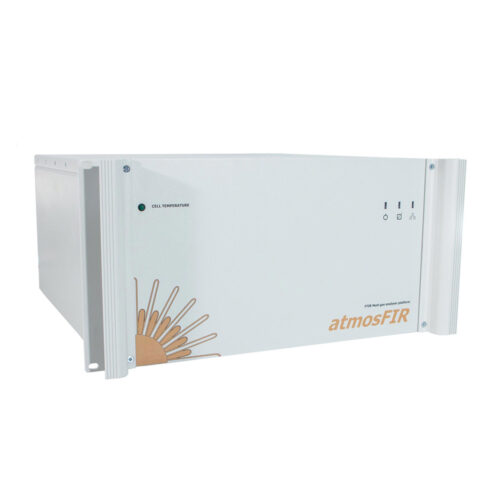 atmosFIR is the successor to Protea's previous emissions monitoring FTIR systems, keeping all the features that users found valuable in achieving their measurement results, but offering the benefits of the new atmosFIR platform with increased portability, lower ownership costs and increased measurement performance. atmosFIR can be considered a simple multi-gas analyser for combustion gas measurements; indeed for some users that is all it will be and as such it provides a cost-effective and complete measurement system. However, for the expert user atmosFIR will offer all the benefits of FTIR, with hundreds of gas measurements, multiple analytical ranges, in-depth chemometric result diagnoses and dedicated on-board sampling system. With Protea's in-house chemometrics application support and 15+ year history of emission monitoring projects, atmosFIR offers the user the complete package for their monitoring needs. With long-lifetime VCSEL reference laser diode, unique cell design, and air cooled DTGS detector with 24-bit ADC, atmosFIR is a step-change in value and service lifetime for FTIR emission gas analysis.
atmosFIR is the successor to Protea's previous emissions monitoring FTIR systems, keeping all the features that users found valuable in achieving their measurement results, but offering the benefits of the new atmosFIR platform with increased portability, lower ownership costs and increased measurement performance. atmosFIR can be considered a simple multi-gas analyser for combustion gas measurements; indeed for some users that is all it will be and as such it provides a cost-effective and complete measurement system. However, for the expert user atmosFIR will offer all the benefits of FTIR, with hundreds of gas measurements, multiple analytical ranges, in-depth chemometric result diagnoses and dedicated on-board sampling system. With Protea's in-house chemometrics application support and 15+ year history of emission monitoring projects, atmosFIR offers the user the complete package for their monitoring needs. With long-lifetime VCSEL reference laser diode, unique cell design, and air cooled DTGS detector with 24-bit ADC, atmosFIR is a step-change in value and service lifetime for FTIR emission gas analysis. -
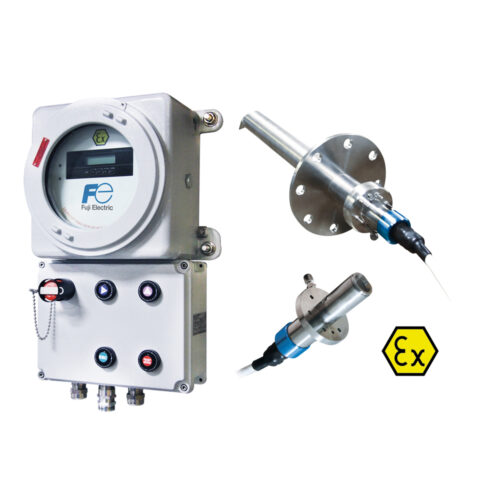 Ex-proof in situ zirconia oxygen analyzer for combustion controlThe oxygen measurement enables the control of burner fuel/air ratios to ensure combustion efficiency and process safety. Fuji Electric O2 Analyser is adapted to be installed in hazardous areas and to withstand critical environments as:
Ex-proof in situ zirconia oxygen analyzer for combustion controlThe oxygen measurement enables the control of burner fuel/air ratios to ensure combustion efficiency and process safety. Fuji Electric O2 Analyser is adapted to be installed in hazardous areas and to withstand critical environments as:- Refinery process heaters
- Petrochemical reactor furnaces
- Industrial large scale boilers
-
 ASP-CON can be installed permanently into several different areas in the Secondary Wastewater Treatment Plant to provide feed-forward or feed-back control for plant operation and optimisation. The ASP-Con carries out several continuous measurements, and also analyses discrete batch samples of the product to give the following parameters on a frequency which the plant operator can set:
ASP-CON can be installed permanently into several different areas in the Secondary Wastewater Treatment Plant to provide feed-forward or feed-back control for plant operation and optimisation. The ASP-Con carries out several continuous measurements, and also analyses discrete batch samples of the product to give the following parameters on a frequency which the plant operator can set:- DO
- Temperature
- Ammonium
- Potassium*
- pH*
- ORP*
- MLSS
- SVI/SSVI
- TSS (predicted)
- RAS Concentration
- Nitrification Levels*
- Oxygen Uptake Rate
- Specific Oxygen Uptake Rate
- Critical Oxygen Concentration Points
- Toxicity Management
-
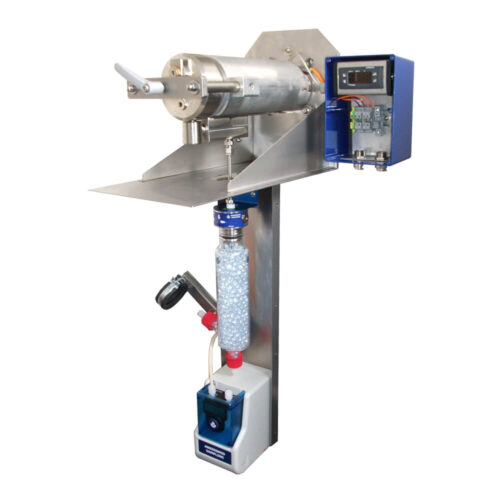 The probe type ASP 320 is based on the standard Ankersmid sample probe. Due to its modular and innovative design the Ankersmid heated sample probe cover also meet the special requirements of above mentioned application. With the heated filter body a filter element of 150mm length, suitable for most applications up to 1g dust/m3, is integrated. When the integrated port is used for back-flush higher dust loads can be handled. Additional a pre-filter can be mounted on top of the sample probe. The filter element can be replaced without any tools and in the shortest possible time. At the sample gas outlet of the probe a special non-heated condensate vessel of glass is mounted. It is filled with glass balls to extend the surface for the salification. The salt deposits and will be washed out with the condensate. A peristaltic pump type ASR25 continuously removes the condensate with the solved ammonium salts. The temperature of the vessel is higher than the ambient temperature because of the hot gas stream. Therefore a loss of measured components is negligible because of warm condensate. In case of a DeNOx application with a small content of NH3 (normally only a few ppm) it is possible to analyse SO2 and NOX without great losses (only some ppm which normally can be neglected). To determine the loss, it is possible to give test gas via the probe to the analyser(s). A measuring fault can be found and calibrated. As an option the vessel can be heated as well to suppress chemical reactions of the measured component below a defined temperature. At the sample outlet of the vessel a heated gas sample line series AHL can be connected.
The probe type ASP 320 is based on the standard Ankersmid sample probe. Due to its modular and innovative design the Ankersmid heated sample probe cover also meet the special requirements of above mentioned application. With the heated filter body a filter element of 150mm length, suitable for most applications up to 1g dust/m3, is integrated. When the integrated port is used for back-flush higher dust loads can be handled. Additional a pre-filter can be mounted on top of the sample probe. The filter element can be replaced without any tools and in the shortest possible time. At the sample gas outlet of the probe a special non-heated condensate vessel of glass is mounted. It is filled with glass balls to extend the surface for the salification. The salt deposits and will be washed out with the condensate. A peristaltic pump type ASR25 continuously removes the condensate with the solved ammonium salts. The temperature of the vessel is higher than the ambient temperature because of the hot gas stream. Therefore a loss of measured components is negligible because of warm condensate. In case of a DeNOx application with a small content of NH3 (normally only a few ppm) it is possible to analyse SO2 and NOX without great losses (only some ppm which normally can be neglected). To determine the loss, it is possible to give test gas via the probe to the analyser(s). A measuring fault can be found and calibrated. As an option the vessel can be heated as well to suppress chemical reactions of the measured component below a defined temperature. At the sample outlet of the vessel a heated gas sample line series AHL can be connected. -
 Equip your lab with the accurate, easy to use Thermo Scientific™ Orion™ AquaMate 8000 UV-Vis Spectrophotometer to ensure you have the ideal instrument for water analysis and beyond. This spectrophotometer offers 260 preprogrammed methods for ion concentration from absorbance plus wavelength scanning function and standard curve function for creating custom method using so virtually any brand of colorimetric reagent can be used. Utilize 190-1100 nm selectable wavelengths, 1.8 nm spectral bandwidth and vial flexibility with the included 3-position carousel for holding round and rectangular vials. Other more simple models available!
Equip your lab with the accurate, easy to use Thermo Scientific™ Orion™ AquaMate 8000 UV-Vis Spectrophotometer to ensure you have the ideal instrument for water analysis and beyond. This spectrophotometer offers 260 preprogrammed methods for ion concentration from absorbance plus wavelength scanning function and standard curve function for creating custom method using so virtually any brand of colorimetric reagent can be used. Utilize 190-1100 nm selectable wavelengths, 1.8 nm spectral bandwidth and vial flexibility with the included 3-position carousel for holding round and rectangular vials. Other more simple models available! -
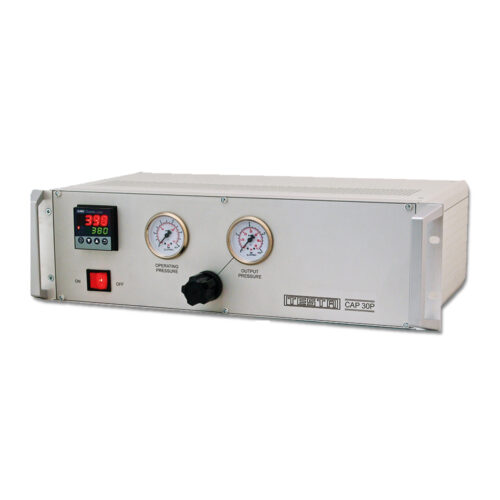 The air purifier CAP 15 and air purifier CAP 30 produces clean and hydrocarbon-free air out of normal compressed air. The Pt/Pd-catalyst convert by catalytical total-oxidation at 370°C all hydrocarbons inclusive methane (CH4) into carbondioxyde (CO2) and water (H2O). Hydrogen (H2) and carbonmonoxyde (CO) will be removed quantitatively.The produced air quality ist constantly free of hydrocarbons and better than sythetic air from gas bottles of class 5.0 (refering to organic components).On account of the high gas purity, the air purifier CAP 15/30 are used for FID-measuring systems as combustion air and as zero gas
The air purifier CAP 15 and air purifier CAP 30 produces clean and hydrocarbon-free air out of normal compressed air. The Pt/Pd-catalyst convert by catalytical total-oxidation at 370°C all hydrocarbons inclusive methane (CH4) into carbondioxyde (CO2) and water (H2O). Hydrogen (H2) and carbonmonoxyde (CO) will be removed quantitatively.The produced air quality ist constantly free of hydrocarbons and better than sythetic air from gas bottles of class 5.0 (refering to organic components).On account of the high gas purity, the air purifier CAP 15/30 are used for FID-measuring systems as combustion air and as zero gas

